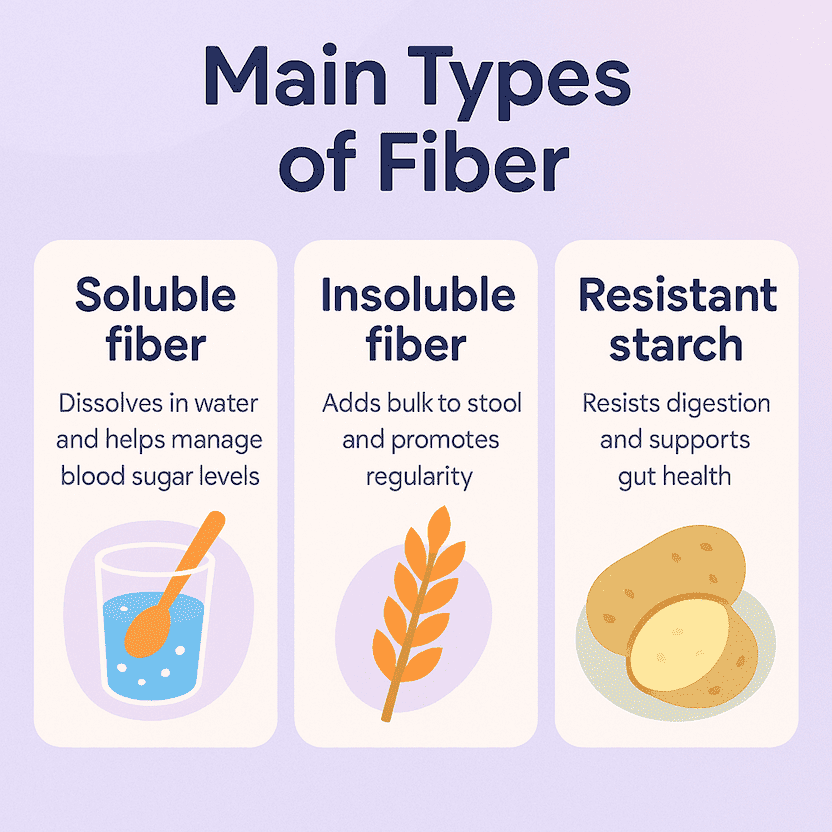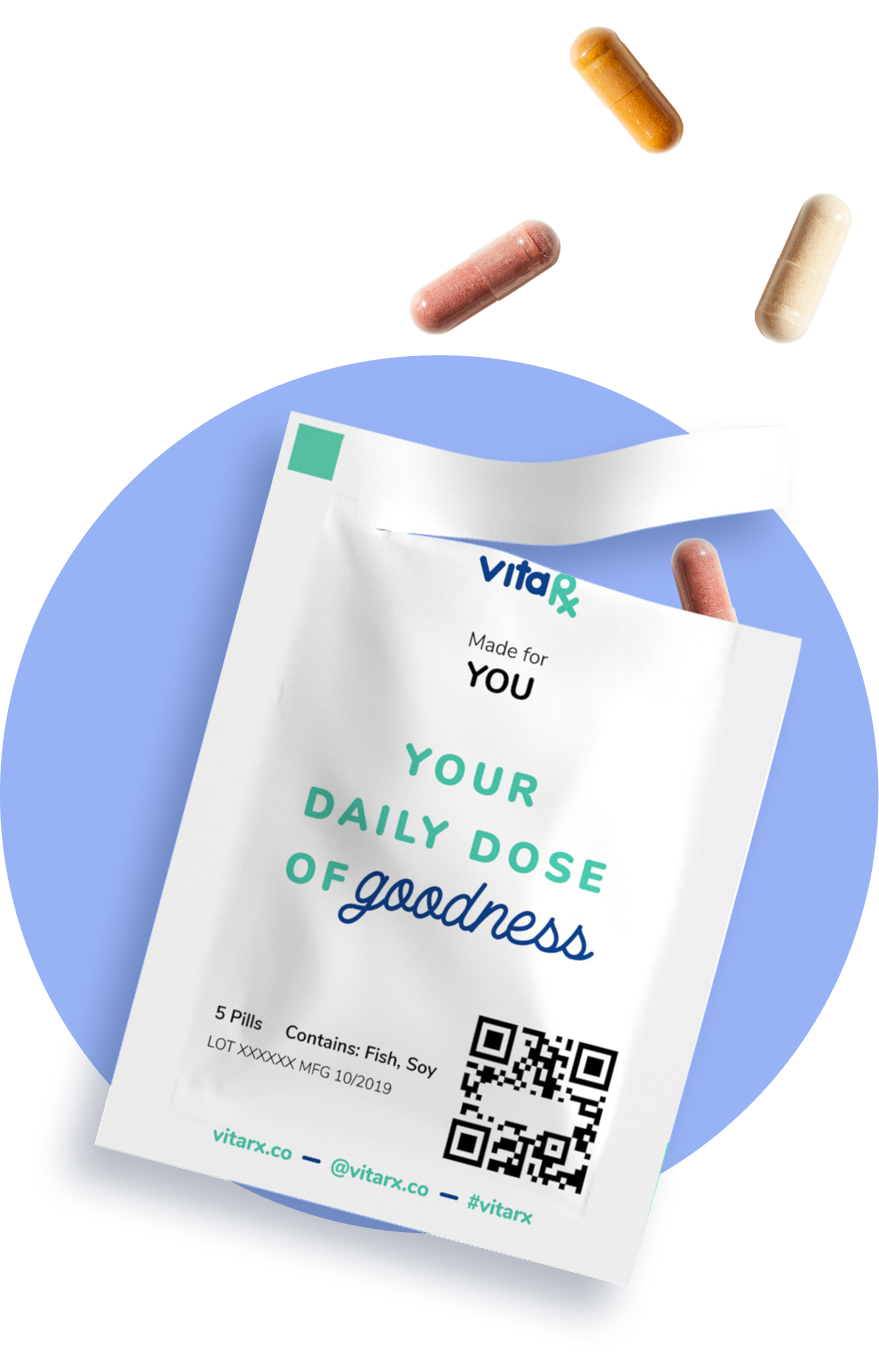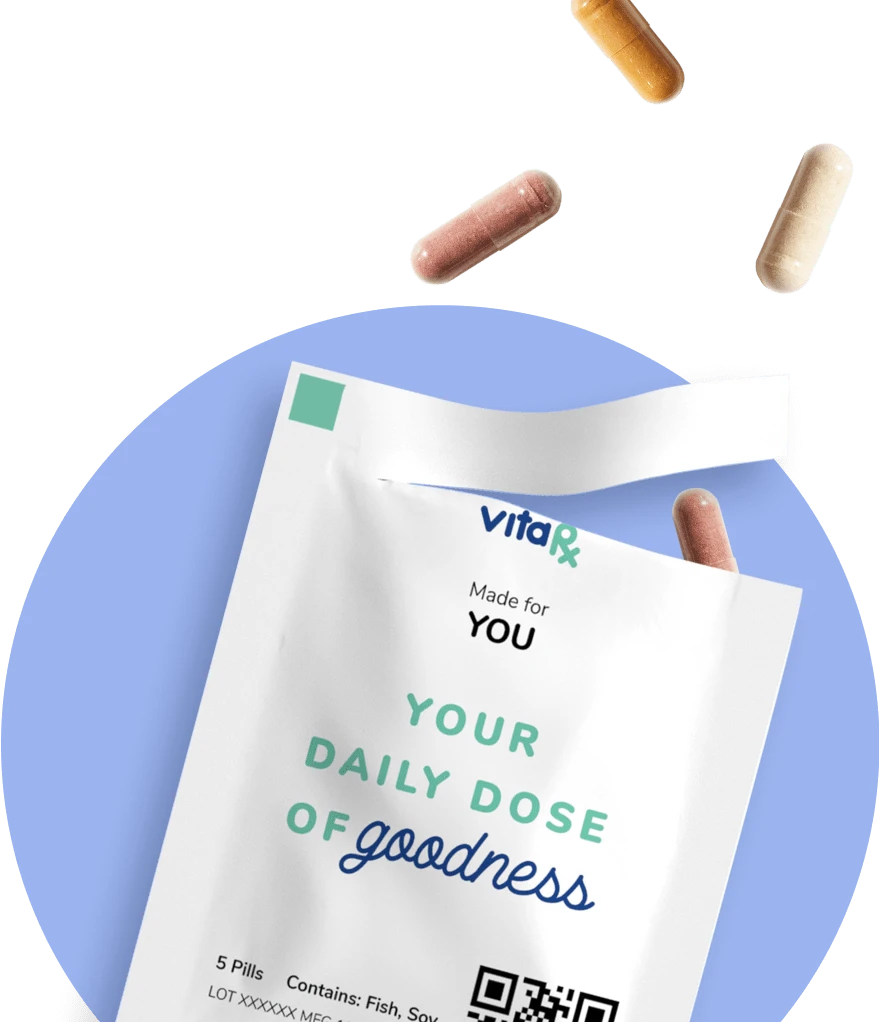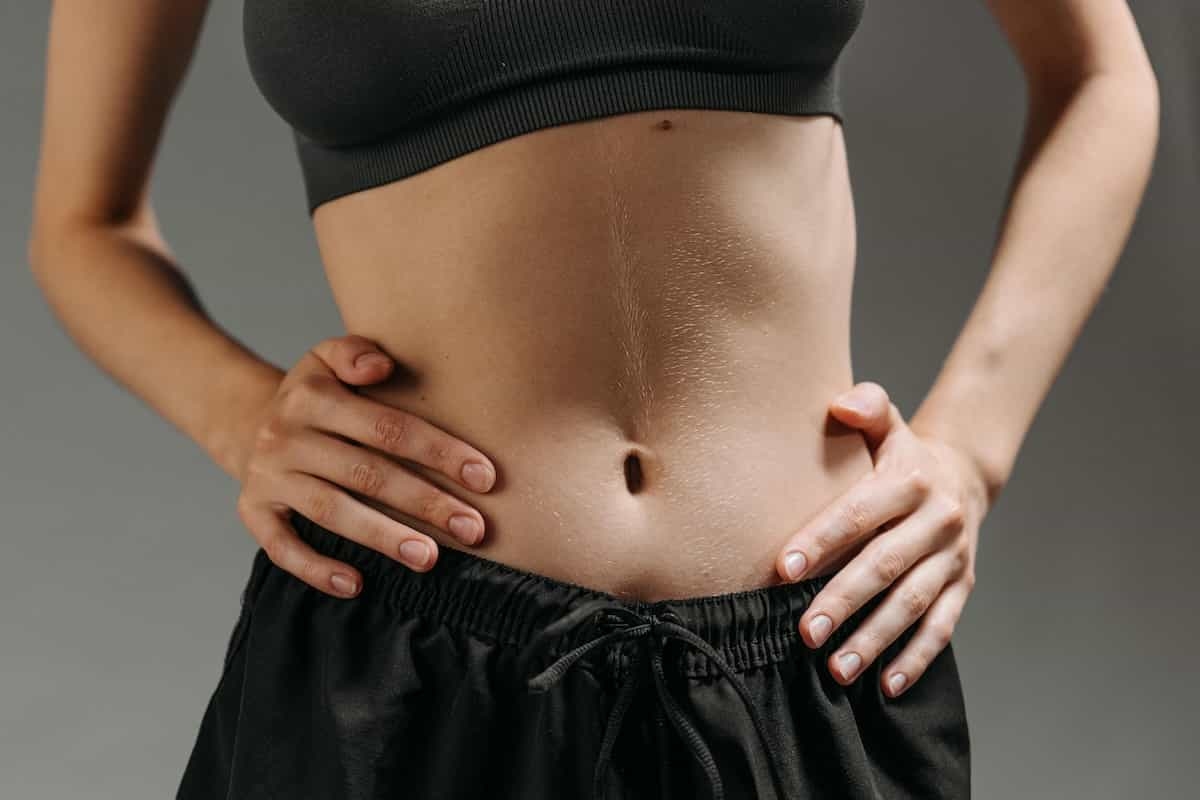Last update: November 6, 2025
4 minute read
High-Fiber Foods: The Top Sources for Better Digestion and Gut Health
Which foods give you real fiber for better digestion? Discover top high-fiber picks and how to include them daily.

By Derick Rodriguez, Associate Editor
Edited by Yerain Abreu, M.S.

Ever finish a meal and still feel... stuck? Or maybe your digestion feels sluggish, bloated, or just off. You might chalk it up to stress, but a missing piece could be fiber.
In this post you’ll learn exactly which foods deliver meaningful fiber, how different types work in your gut, and smart ways to build your intake without discomfort.
Key takeaways
- There are soluble, insoluble, and resistant starch types of fiber, and each supports digestion differently
- Boosting fiber too fast can cause gas or bloating; add things gradually and drink water
- High-fiber foods also help with blood sugar control, cholesterol, and satiety (feeling full)
What is dietary fiber, and why does it matter?
“Dietary fiber” refers to parts of plant foods that your small intestine can’t digest. Instead, fiber travels to your large intestine (colon) and works in different ways.
Here are the main types and what they do:
- Soluble fiber: Dissolves in water to form a gel-like substance. Slows digestion, helps regulate blood sugar, and can help lower LDL (“bad”) cholesterol.
- Insoluble fiber: Doesn’t dissolve; it adds bulk and helps keep things moving in the gut.
- Resistant starch: Acts like fiber. It resists digestion in the small intestine and is fermented by gut bacteria in your colon.
Fiber is also a key “food” for many beneficial gut bacteria. In doing so, these microbes produce short-chain fatty acids (SCFAs) like butyrate, which help nourish colon cells and support gut barrier health.
The recommended daily intake varies, but many guidelines suggest aiming for 25–30+ grams for adults (exact needs depend on calories, age, sex).

Which foods deliver the most fiber (and in which form)?
Here’s a table comparing common foods and their fiber types:
Food | Typical fiber per serving* | Dominant fiber type(s) | Notes |
|---|---|---|---|
Cooked lentils (1 cup) | ~ 15–18 g | mix of soluble + insoluble | Legumes are among top fiber sources |
Black beans (1 cup) | ~ 15 g | soluble and insoluble | Also high in resistant starch traits |
Chia seeds (2 tbsp) | ~ 10 g | mostly soluble | These seeds absorb water and form gel (great in puddings) |
Oats (½ cup rolled, cooked) | ~ 3–5 g | soluble (beta-glucan) + insoluble | Beta-glucan is a soluble fiber known to help blood lipids |
Whole wheat bread (1 slice) | ~ 2 g | mainly insoluble | Good for adding bulk |
Broccoli (1 cup, chopped) | ~ 5 g | mix | Offers both fiber types and micronutrients |
Avocado (½ medium) | ~ 5–7 g | mix | Contains both fibers plus healthy fats |
Raspberries (1 cup) | ~ 8 g | mix | Seeds contribute insoluble fiber |
*Values approximate; actual fiber varies by variety, ripeness, processing, etc.
VitaRx Tip
Keep a running list in your phone: “beans, oats, seeds, greens, berries.” Make sure at least two of those appear in every major meal.
How to ramp up fiber without triggering discomfort
Boosting your fiber intake overnight often leads to gas, bloating, or even loose stools. Here’s how to ease in:
- Increase gradually: About 3–5 g extra per week.
- Hydrate: Water helps fiber move through your system.
- Mix soluble and insoluble fibers: Mix in meals so digestion is smoother.
- Cook or soak pulses (beans, lentils): Reduces some of the gas-producing compounds.
- Split high-fiber foods across meals: Don’t load one meal heavily.
How fiber supports gut health beyond just “helping you poop”
Fiber’s benefits spill far beyond just bowel regularity:
- Feeds your microbiome. Many fibers, especially soluble and resistant starch, ferment in the colon and feed beneficial bacteria. These bacteria produce SCFAs, which support colon lining, reduce inflammation, and help immune balance.
- Helps regulate blood sugar. Soluble fiber slows absorption of sugars, which can reduce glucose spikes.
- Lowers cholesterol. Some soluble fibers bind cholesterol in the gut, preventing reabsorption.
- Supports weight management. High-fiber meals keep you fuller longer, reducing overeating.
- May lower disease risk. Epidemiological data link higher fiber intake with lower risks of cardiovascular disease, colorectal cancer, type 2 diabetes.
Should you ever use fiber supplements?
Supplements (like psyllium husk, inulin powders) can be helpful if your diet is restricted or you struggle to eat enough high-fiber whole foods. But:
- They do not deliver the same micronutrients, phytonutrients, or food matrix benefits that whole foods bring.
- Starting with foods gives you a mix of fibers and better tolerability.
- Always introduce supplements slowly and drink extra water.
- Talk with a healthcare provider before starting, especially if you have digestive disorders.
Frequently asked questions (FAQ)
Here are some of the most frequently asked questions about high-fiber foods.
Final thoughts
Fiber is one of the most powerful, underappreciated tools for digestive wellness, blood sugar balance, and gut microbiome support. But it is not one-size-fits-all; the key is variety, gradual introduction, and paying attention to how your body responds. Supplements can have a place when diet alone doesn’t cut it, but food should come first.
Your daily routine (meals, snacks, hydration) is the canvas — fiber is one of the most important colors you can add. And as your personalized nutrition partner, VitaRx is here to support your health and wellness.
Sources and references
Editor

Derick Rodriguez
Derick Rodriguez focuses on editing health and wellness-related content. With over half a decade of experience in the digital realm, Derick has developed a unique skill set that bridges the gap between complex health concepts and accessible, user-friendly communication. His approach is deeply rooted in leveraging personal experiences and insights to illuminate the nuances of health and wellness topics, making them more approachable and empowering readers with knowledge and confidence.
Editor

Yerain Abreu
Yerain Abreu is a content strategist with over seven years of experience. He earned a Master's degree in digital marketing from Zicklin School of Business. He focuses on medical and health-related content, working with top healthcare professionals to ensure content is engaging and reliable.
At VitaRx, we're not just passionate about our work — we take immense pride in it. Our dedicated team of writers diligently follows strict editorial standards, ensuring that every piece of content we publish is accurate, current, and highly valuable. We don't just strive for quality; we aim for excellence.
Related posts
While you're at it, here are some other relevant articles you might be interested in.

Get your personalized vitamin recommendations in less than
5 minutes.
Get your personalized vitamin recommendations in less than
5 minutes.






